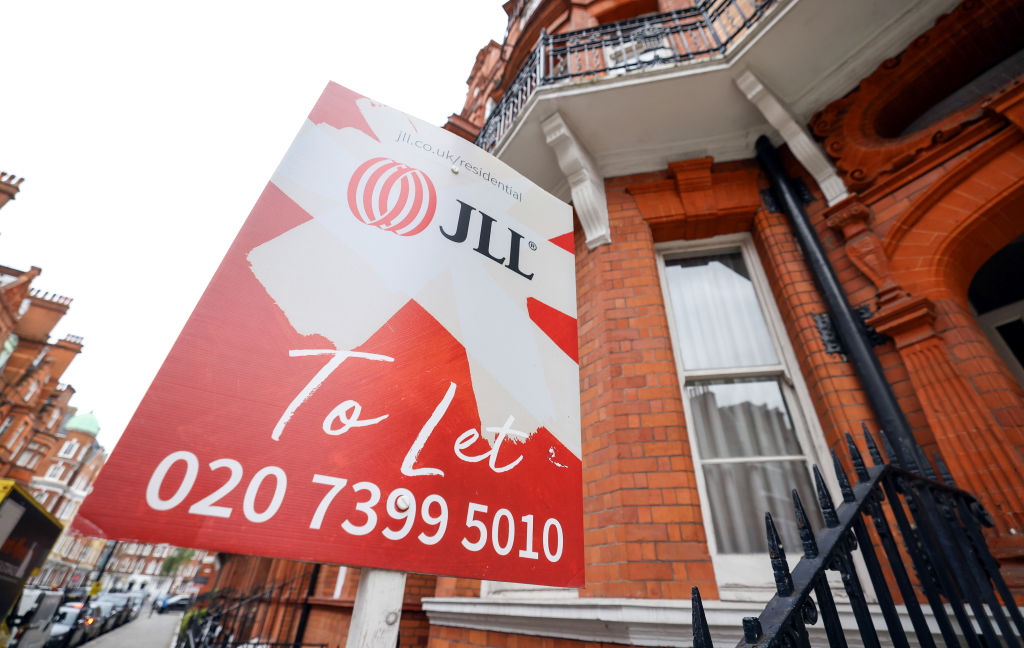Gap in rents between north and south England ‘smallest on record’, letting agent finds
Rents in the north of England have surged by almost half since Covid, Hamptons found. But the increase in the south was just 34% over the same period.


The gap between rents in the north and south of England has fallen to its lowest level in more than a decade, the latest Hamptons Lettings Index has shown.
Covering the month of August, the letting agent’s research has found that the average rent in the north of the nation is almost 10% up year-on-year - outpacing the 5% growth seen in the south. This has closed the price gap between the areas to 37% (£357), which is the smallest difference since Hamptons began its index in 2013.
It comes as landlords are abandoning the buy-to-let sector due to diminishing returns. The subsequent drop in the stock of properties to let means there is currently a high number of prospective tenants competing for each new rental home that comes to market.
MoneyWeek
Subscribe to MoneyWeek today and get your first six magazine issues absolutely FREE

Sign up to Money Morning
Don't miss the latest investment and personal finances news, market analysis, plus money-saving tips with our free twice-daily newsletter
Don't miss the latest investment and personal finances news, market analysis, plus money-saving tips with our free twice-daily newsletter
The government is also set to shake up the lettings market with new regulation. It has placed its Renters’ Rights Bill before Parliament, which will resurrect the Conservative government’s plans to ban no-fault evictions. There will still be some circumstances where landlords can evict tenants.
Hamptons: rents in north have ‘surged by almost half since Covid’
In its monthly Lettings Index, Hamptons has found the rent gap between the north and south of England has closed substantially over the past year. At 37%, the difference between rents in the two areas has narrowed from 43% a year ago, and is down 18 percentage points from a peak of 55% in November 2021.
Based on a three-month rolling average of achieved rents, the research found that the average new tenancy in the south came in at £1,318 per calendar month (pcm). This compared with £960pcm in the north - an area that comprises of the North East, North West and Yorkshire & Humber regions.
While the south saw rental growth peak at 8.7% year-on-year in August 2023, this rate has slowed significantly to 5% during the same month in 2024. The north has mostly maintained the pace of increases, growing 9.6% this August compared to 9.7% a year ago.
In nominal terms, the typical cost of letting out a home in the north has surged by an average of 48% since 2019. In the south, rents are up 34%, with this figure also forming the GB average. It means tenants across England, Scotland and Wales have seen a £349 average rise in monthly rents - adding £4,184 a year for the typical tenant.
When adjusted for inflation, this GB-average falls to 10% in real-terms. Northern rents are up 24% through this metric, with the North West leading the way on 29% real-terms growth.
Greater London has seen some of the lowest rates of growth, with prices having gone up 27% numerically, but just 3% once inflation was taken into account. For Scotland, nominal rents went up 48% and 24% in real-terms, while in Wales - despite a nominal increase of 19% - actual rents were 5% down on 2019’s figures.
Commenting on the findings, head of research at Hamptons, Aneisha Beveridge, said: “Much like house prices, the rental north-south divide has been closing for the last five years. The narrowing reflects the cyclical nature of the housing market with house prices in the north of England rising 31%, nearly double the southern rate. These figures have been mirrored in the rental market, with rents in the north of England quickly playing catch up.
“But it's only been in the last year that the gap has really started to narrow beyond the point we’ve previously seen. This has been driven by the slowing of rental growth across southern England caused by greater affordability pressures. While tenants in the south have seen weaker growth in percentage terms, in cash terms, they’ve faced big rises. A 10% increase in south of England rents would cost tenants an extra £1,581 a year, £428 more than for a tenant in the north.”
Beveridge added that average rents have continued to climb due to the “higher costs” landlords are facing. She said that “nearly half” of the rent they get is being put towards costs.
Get the latest financial news, insights and expert analysis from our award-winning MoneyWeek team, to help you understand what really matters when it comes to your finances.
Henry Sandercock has spent more than eight years as a journalist covering a wide variety of beats. Having studied for an MA in journalism at the University of Kent, he started his career in the garden of England as a reporter for local TV channel KMTV.
Henry then worked at the BBC for three years as a radio producer - mostly on BBC Radio 2 with Jeremy Vine, but also on major BBC Radio 4 programmes like The World at One, PM and Broadcasting House. Switching to print media, he covered fresh foods for respected magazine The Grocer for two years.
After moving to NationalWorld.com - a national news site run by the publisher of The Scotsman and Yorkshire Post - Henry began reporting on the cost of living crisis, becoming the title’s money editor in early 2023. He covered everything from the energy crisis to scams, and inflation. He also has bylines in MoneyWeek.
-
 ‘Why I have ditched my Help to Buy ISA for cash savings and the stock market’
‘Why I have ditched my Help to Buy ISA for cash savings and the stock market’Without the 25% bonus, my Help to Buy ISA is effectively redundant, says MoneyWeek writer Sam Walker.
-
 Is your inheritance tax allowance cut if you sell to downsize or sell your home to pay for care?
Is your inheritance tax allowance cut if you sell to downsize or sell your home to pay for care?Downsizing relief is a little-known benefit that could save your loved ones tens of thousands of pounds in inheritance tax after you’ve died.
